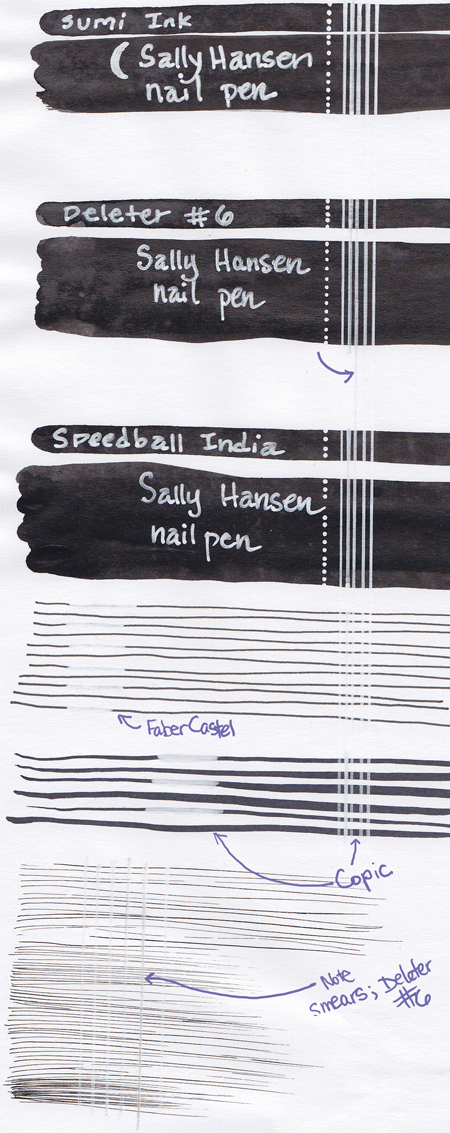I love art. While I don’t get to play as often as I’d like, I thoroughly enjoy the hell out of it when I can.
One of the joys of committing art is playing with ink and paper.
And if I can’t play with the paper and ink myself, I often like to watch how others do so. Watching other active artists work is a wonderful learning tool–and it brings me great joy. Of course in the past, one needed to personally know an artist in order to watch their process, but these days it can be possible to see it on YouTube in videos or on DeviantArt in tutorials.
Today I wanted to share some of my favorite videos.
First is Nyek! Video Blog #64
Pencils by Whilce Portacio and Inks by Ed Tadeo.
I find this very restful to watch, actually. I’m always fascinated by which portions of an image an artist chooses to begin working on. Then, which portion they choose to highlight with their tools, and what parts they come back to.
I’ve watched this video several times, and while I don’t always follow the capes, I do have considerable affection for many of them, so this is a satisfying piece for me. There is often a difference between a working artist on deadline (using Photoshop to black things in, for example) and a teacher showing an exhibition piece. Both very valuable. Just different.
The second video is an illustrator, Francis Vallejo, who has made a longer how to video:
This video is a short series of demonstrations–it’s not a working piece (as in the first video), it’s a demonstration piece. He does several versions-one with pencil, then with nibs, then with brush work, and another with gray washes. It’s useful and interesting.
And while the one below is actually speed painting, not inking, I wanted to share it anyway:
No, I have no idea what the words say. I think the artist’s name is hatsune miku, but that is an educated guess (Update by Noah: Hatsune Miku is the character being drawn, apparently). What I wanted to talk about is the approach–it’s interesting and the results are lovely. I’ve never seen an artist begin with a silhouette and then move to the darker to lighter shapes–different and fun. So many ways to reach the end point of a figure drawn and beautiful.
This other next one is also not ink. It’s Liang Yue demoing Corel Painter 9, but I couldn’t resist, because holy shit.
That one speaks for itself.
This last one is Ayano Yamane inking her work and then doing watercolors. It’s ever so slightly naughty, so children cover your eyes, and adults, scoot closer. But seriously, Ayano’s inks are absolutely gorgeous. Her pencils, of course, are top notch, but it takes a great deal of control to do this sort of inking because (if you’ve never done watercolors or wet ink a la Dr Martens inks) you need to know that you can’t actually erase on that paper or Bad Things Will Happen (you’ll get all sorts of hideous splotches) and you can’t exactly correct skipping nibs or spatters. It requires a very steady hand, and unlike cape comics, yaoi comics (like shojo comics) require quite a thin line. It’s beautiful, yes, and my favorite kind of ink, but it takes practice and skill.
Ayano Yamane:
I hope you’ve enjoyed these. One of my favorite things about living in the future is getting a chance to watch the creation and sharing of amazing art.

